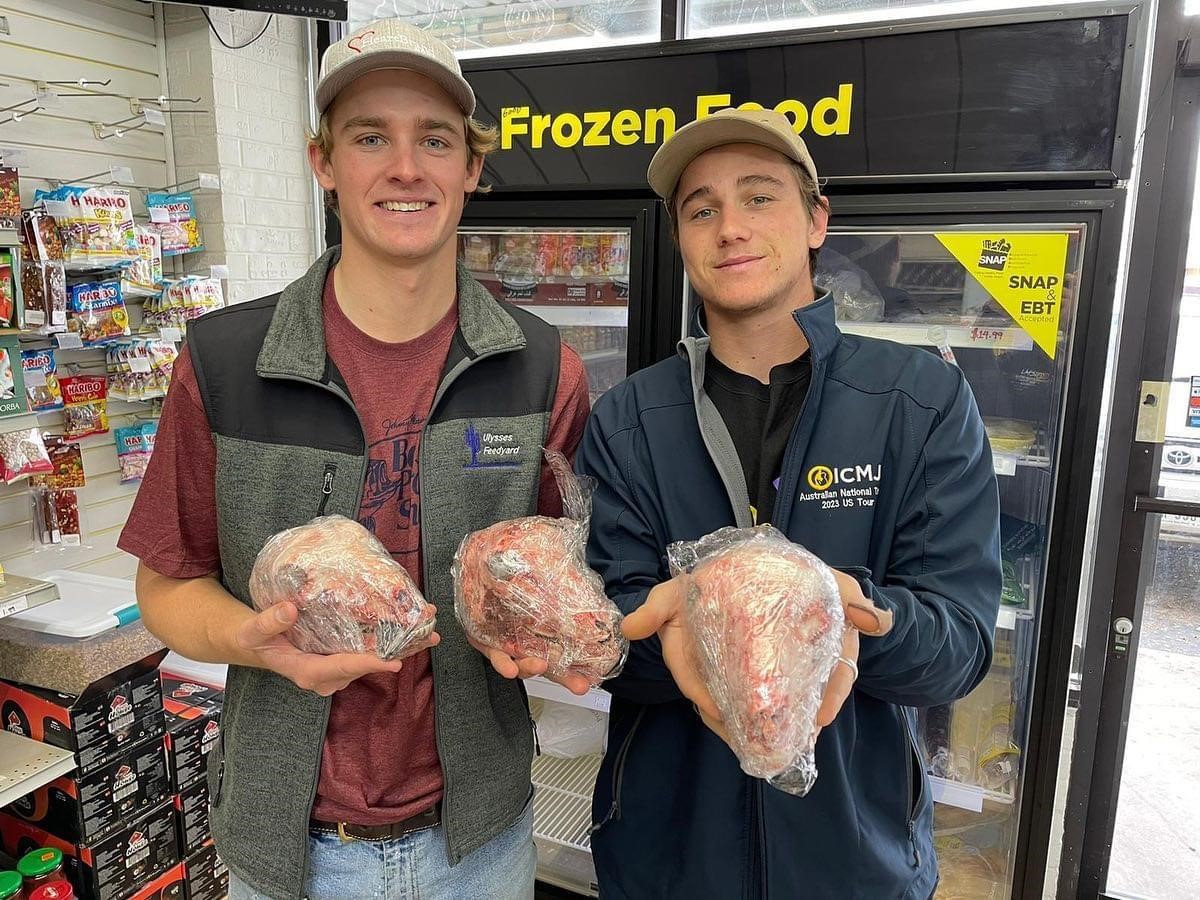
06 Oct US provides niche, high-value opportunities for Australian red meat
As Australia strengthens its hold as the world’s largest sheepmeat exporter, Australian ICMJ team member Lawton Elliott is tipping the United States to become one of the key market development opportunities for Australia’s producers.
During a three-week ICMJ tour of the US red meat industry, Mr Elliott, a Bachelor of Agribusiness graduate from the University of Queensland, analysed the current consumer choices and buying pressures in the US and how Australian producers could capitalise.
“Australia has a significant advantage when it comes to lamb production both from a quality and quantity point of view, when compared to any other country around the world,” Mr Elliott said.
“However, one of the challenges for the industry remains breaking the Americans’ culturally ingrained distaste for sheepmeat.
“Most Americans have never tasted lamb,” he said.
With Australia’s 2023 national lamb meat production levels expected to surpass last year’s record of 537,000 tonnes, Meat and Livestock Australia’s marketing brand, Australian Lamb, recently partnered with former MasterChef contestant Marion Grasby to encourage Australians to eat more lamb.
Among other campaigns in the US and around the world, MLA’s Lambassador program has recruited high-profile food service professionals and butchers to promote high-quality and nutritious Australian lamb into more homes and restaurants.
Mr Elliott believes the most lucrative opportunities exist in the niche fine-dining food service market.
“Currently, lamb makes up less than one percent of overall meat sales in the US,” he said.
“However, the millennial generation is beginning to show a willingness to include lamb in their diet, particularly through fine dining options.”
Mr Elliott’s report, The Meat We Eat also identified grassfed beef as another niche US market opportunity for Australian producers.
“About 97% of beef production in the US is grainfed, which provides a niche but highly lucrative export opportunity for Australian grassfed beef,” he said.
“These consumers are the upper echelon of affluent consumers who not only value a pleasurable eating experience but appreciate sustainability, animal welfare and health benefits as well,” he said.
MLA’s 2017 US Consumer Tracker Survey found that 64% of consumers believe grassfed beef is better for the animals and 50% consider it better for the environment.
Mr Elliott said strong sustainability messaging around Australian beef and lamb would be key to cracking those US markets.
“The Australian red meat industry has the ability to produce red meat in a way that is socially, environmentally, and economically responsible, working with our land and upholding animal welfare standards that can’t be matched by any of our major competitors anywhere throughout the world,” he said.
“The industry has collectively reduced greenhouse gas emissions by over 59.1% since 2005 and has achieved a 68% reduction in water usage since 1985 and now has a nationwide goal to become carbon neutral by 2030.”
The 2023 ICMJ US tour spanned three weeks, seven states, two inter-collegiate competitions and more than 40 industry experiences, exposing participants to the broad spectrum of the US red meat supply chain.
Sponsored by Meat and Livestock Australia (MLA) and the Australian Meat Processor Corporation (AMPC) more than 130 students over 29 years have taken part in the ICMJ US Tour.
After returning from the US, Mr Elliott took up a graduate position with Signature Beef, an opportunity he became aware of through his involvement in the ICMJ program.
“Being part of the ICMJ program has been an incredible opportunity and has opened so many doors for me, even at this early stage of my career,” Mr Elliott said.
“I would encourage anyone considering a career in agriculture to become involved with ICMJ and see for themselves the incredible pathways that it creates,” Mr Smith said.
• Mr Elliott’s full report is available here.
